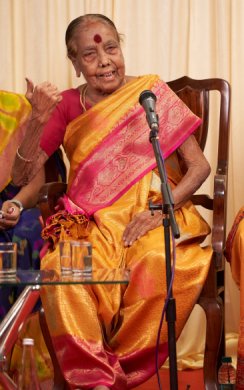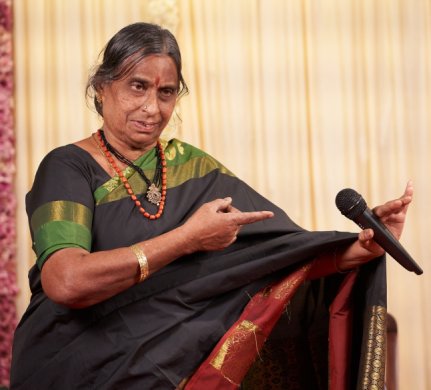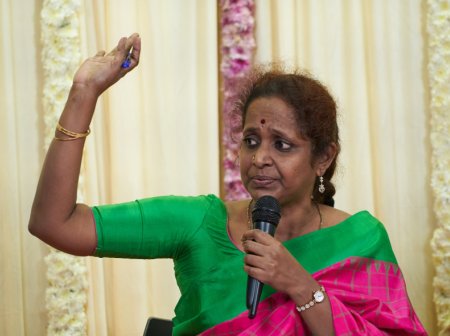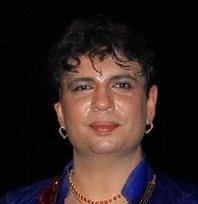
|
 |

|
 |
The twain shall meet - Aniruddha Knight e-mail: aniruddhaknight@gmail.com Photos courtesy: SNS Arts Development Consultancy January 29, 2023 Tradition, in the context of hereditary dance and its music, is riddled with more questions than answers. We grapple with its present day contextualisation, much of the time in spurts of emotional zeal and laced with an undercurrent of guilt and a sense of loss. In recent years there has been an increasingly clamouring of voices, demanding that these suffocating traditions of nearly a century have their rightful space amongst mainstream interpretations of Bharatanatyam. Though I come from a tradition of dancers and musicians myself, there are many times when feeling lost amongst the clamouring, name calling and jeering that has riddled social media today. I write not to enumerate further the social uphill and trauma of what many hereditary families have experienced. No one can deny that my family and others are a living example of how tradition can survive and thrive in the 21st century.  Muthukannammal  Mangathayaaru In all honesty, I came to the conversation by Muthukannammal and Mangathayaaru with my own hesitations, notions and expectations. It is with a certain apprehension that I peered into the world of these artists through the candid conversation of their lives and families. Was it a fear in me that I may recognise the pain and trauma that these artists have endured, fear of hurt, bitterness, and rejection that I recognise - tight knit emotions that my mother or grandmother or great-grandmother seethed to express but constantly kept in check? I know that this conversation was certainly decisive in one way. We are in constant need to be boxing these traditions under one homogenous category, a single box to tick off the list of various "types" of dancing. It was undeniable in the example of two dance traditions, that there were many more differences than similarities in their approach to the art. The function of dance and its music in society has been myriad - whether it is a medium of cerebral and intellectual stimuli amongst the elite or as repetitive single focused ritual presented in daily temple worship. The approach to the art, from the sliver of example that I experienced, overlapped only on the surface. One could sense that the foundation of aesthetics and approach to the development of the dance were of two different perspectives. Language, music, and the cultural milieu of these traditions are blatantly varied. In a space where one might have expected to see similarities in what many label today as "devadasi dance," a vivid visible differentiation in approach was undeniable. Perspectives that were not in opposition, but two perspectives amongst many that would have thrived in communities throughout South India. Each tradition was shaped by its own repertoire on the foundation of its purpose. Repertoires were not shared and often little was common amongst them. These artists are representatives of a living tradition that is on the brink of extinction. Age and time take a toll on the artist and the art. The practitioner must keep performing just as the art needs to be performed to stay alive, let alone vibrant and evolving in the present. Any performing art can survive only by performance, not just through its practice or knowledge of its ethos. Any ritual art needs its functionality to not be questioned based on convoluted impressions and misconceptions. If justification need be the case, the entire structure of the relevance of ritual and its adherence can be questioned and re-evaluated. There is a time when we will need to accept the upheaval and damage done to these traditions in the past. Undeniable damage has been done by petty politics, pseudo-morality, and jealousy from within and outside of the tradition. This is not a process to heal or deny a historic reality, but to create a foundation for a new resurrection - an artistic resurrection that revives the colours of a cultural tapestry so intricately woven, that each tradition stands alone as an art unto itself.  Yashoda Thakore 
Many times there is an unnecessary need to edge these traditional practices into homogeneity. All are not one. No one family or hereditary system represents the other. Not one interpretation can or will represent the plethora of aesthetics and approaches to the art. Now is the time to own our differences with an unwavering sense of generosity, graciousness and acceptance. It is time to celebrate our cultural plurality. This endeavour to bring these traditions to the forefront through dialogue, beyond the challenges of language and personalities, certainly does take some gumption. Malavika Sarukkai and Shreya Nagarajan Singh (under the aegis of Kalavaahini Trust) must be acknowledged for initial first steps. It is these first steps that are vital in kindling an interest amongst a younger generation and a plausibility of a continuum just at a time when it might be too late. Yashoda Thakore was the catalyst in ensuring that there was a dynamic exchange between the artists and aptly perceiving the nature of the audience and its quizzical undercurrent.  Aniruddha Knight, 9th generation artiste from his family, is the grandson of Balasaraswati and the artistic director of Bala Music & Dance school in Chennai. Post your comments Pl provide your name and email id along with your comment. All appropriate comments posted with name & email id in the blog will also be featured in the site. |